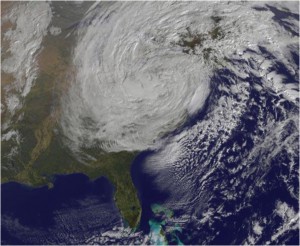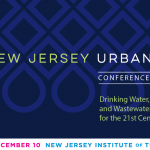New Jersey Future Blog
Energy Resiliency Bank Proposal: Right Concept, but Needs Detail To Protect Against Flooding
September 15th, 2014 by Chris Sturm

An energy resiliency bank would enable financing of upgrades to critical water and wastewater infrastructure to enable them to withstand future severe weather.
On Sept. 5, New Jersey Future submitted its official comments (PDF) on the state’s proposal to establish an Energy Resiliency Bank (ERB). The ERB would provide a funding mechanism, available initially to water and wastewater utilities, for use in making their power systems more resilient to flooding and severe weather.
As the comments stressed, the overall proposal marries the need for “hardening” critical pieces of infrastructure with innovative financing and fills an undeniable need. New Jersey is vulnerable to flooding and has suffered severe hurricane damage in two successive years, leaving some communities without water and threatening the integrity of many wastewater systems. The threat to these facilities will only grow as sea levels rise.
However, the proposal lacks sufficient detail regarding flood hardening, without which the ERB’s goal of increased resiliency for these critical facilities will not be achieved. Specifically:
- The proposal lacks adequate guidance on resiliency standards, creating uncertainty, and possibly extra costs, for applicants;
- The proposal does not specify which of the available NOAA sea-level-rise scenarios to use in planning, or whether and how those scenarios should be reconciled with New Jersey-specific scenarios developed by Rutgers University;
- The proposal lacks specificity in its construction standards, recommending elevations “above FEMA’s best data,” but not specifying how much above;
- No planning horizons are specified in the proposal. New Jersey Future supports requiring planning horizons equal to the projected useful life of a facility;
- There is no guidance in the proposal on how to integrate risks from flooding with risks from storm surge.
Fortunately, these shortcomings are easily remedied. New Jersey Future recommends:
- Requiring construction elevations equal to base flood elevation (BFE) plus three feet in tidal areas, and BFE+2 in non-tidal areas.
- Defining specifically what constitutes a “major installation,” and requiring site-specific analyses and consideration of greater elevations above BFE for these installations.
- Establishing an advisory group to develop refined risk-assessment guidelines, to be included in the guide by December 2014.
- Committing to a review and updating of the guide on a five-year timeframe.
With these changes, the ERB can become a national model for innovative ways to finance energy infrastructure that New Jerseyans can count on, today and in the future.
Read full comments (PDF)















